
Pest Library
A Guide To Common Pests In Santa Clarita, California
When you see a bug skitter out of sight from your kitchen cabinet, you will want to know what it is and if there are more hidden away. That’s where our pest library comes in handy! This resource gives you valuable information about pest identification and prevention in Santa Clarita, where you’re likely to find them, and what to do about them.
Ants
Ants are common household pests that every homeowner is likely to have a problem with sooner or later. Ants often find their way inside while searching for food to feed their colony. These omnivores feed on a wide variety of foods including meats, sweets, and carbohydrates. Ants are social insects, working together in massive coalitions. Their social behavior allows them to be one of the most successful groups of insects on the planet. Ants have three distinct body regions, six legs, and a pair of antennae; reproductive members have wings. Their specific species will determine their exact size and color but most ants are black, brown, red, or yellow.
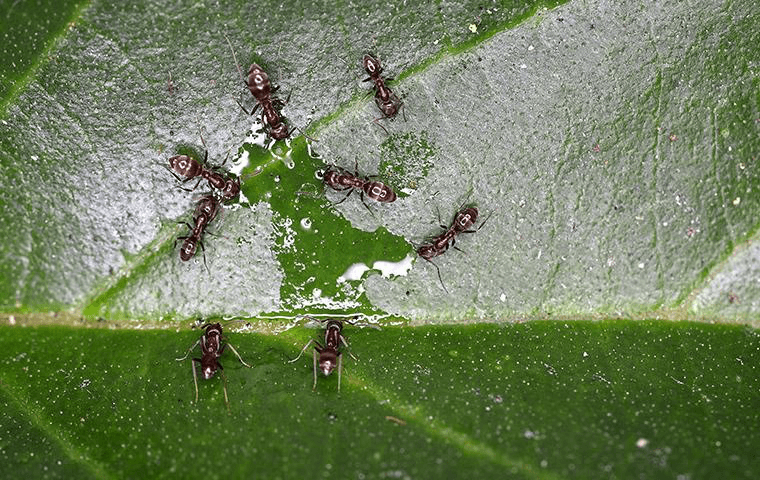
One of the most common species of ants that will invade properties in our area is the Argentine ant. Argentine ants, like most ants, are nuisance pests and do not pose serious threats to people or property. However, Argentine ants and any other species contaminate food, invade in large numbers, and spread bacteria. Some species of ants may bite, sting, or cause structural damage. Ants invade homes and businesses through small exterior openings. Once inside, they create satellite nests that are near their new food source. The large size of their colonies and multiple nesting sites make ants formidable pests.
One of the best things you can do to prevent ants is to get rid of easy access to food sources. Make sure outdoor trashcans and compost bins have tight-fitting lids. Pick up uneaten pet food between feedings and clean up fallen fruits and vegetables from garden areas. It is also important to keep outdoor eating areas free of food debris. To stop ants from being able to find their way inside, make sure to seal any openings in your foundation or exterior walls. It is also a good idea to trim back overgrown vegetation from the exterior of your property and leave an 18-inch barrier between any mulch or grass and your foundation.
Cockroaches
Cockroaches are a resilient, ancient species of insects that live throughout most of the world. They are adaptable and breed quickly, making them difficult to control. These flat, oval-shaped insects hide in dark cracks and crevices during the day. At night, they come out of their hiding spots to feed on a variety of food and non-food items. Their varied diets enable them to thrive in almost any indoor or outdoor environment
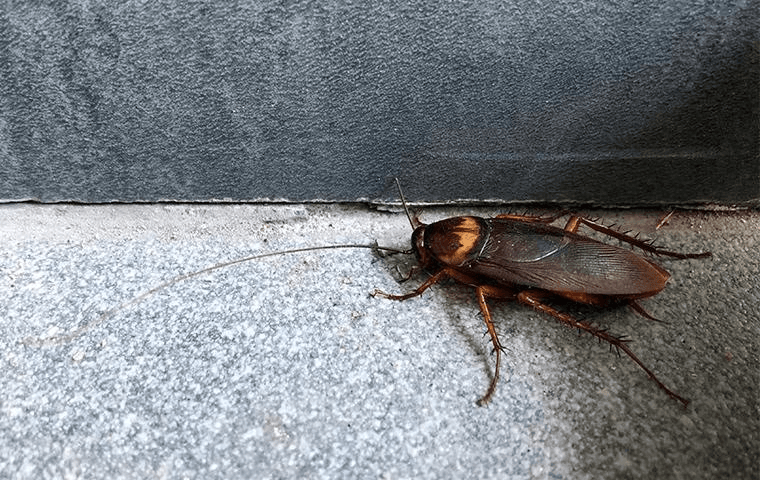
A few of the most common species of cockroaches living in our area are the American cockroach, German cockroach, and Oriental cockroach. All three species can invade any home or business, creating problems for people. Cockroaches contaminate food, food prep areas, dishes, utensils, and surfaces with the bacteria, human pathogens, and parasites that they carry on their legs and bodies. Their excrement and shed skins trigger allergic reactions and asthma attacks in some, especially children. Large populations of cockroaches also create an unpleasant odor. Cockroaches are dangerous pests and should never be allowed on your property.
To prevent cockroaches from getting inside your home or business, limit entry points by sealing openings in the foundation or walls. Place weatherstripping around windows and doors, replace torn window or door screens, and install door sweeps. Most cockroaches like to live in damp, dark areas. Reduce moisture by fixing leaky pipes and fixtures, using dehumidifiers, and making sure gutters direct water away from your foundation. Limit their access to food by placing locking lids on outdoor trash cans and compost bins.
Crickets
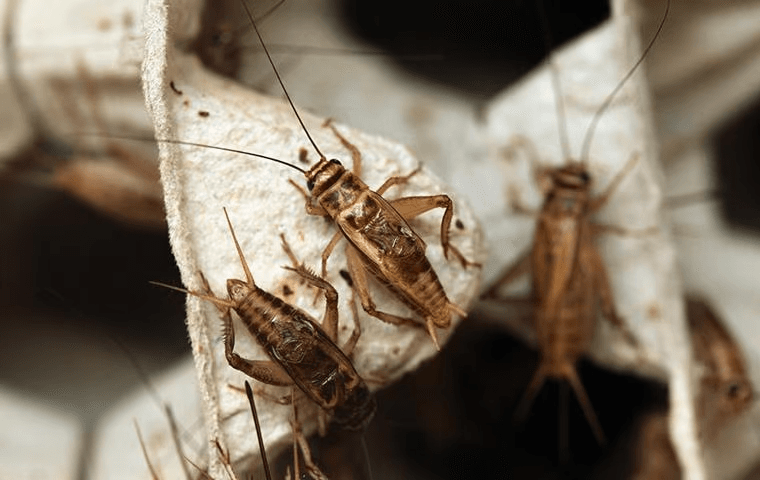
Crickets are a type of insect identified by their long antennae and large, powerful back legs they use for jumping. They are also well known for the chirping sounds that some species of male crickets create by rubbing their wings together to attract females. Crickets are omnivores and feed on a variety of plant materials and other insects. They are nocturnal, hiding during the day and becoming active at night to forage for food sources like plants and other insects
Crickets generally live outside in damp moist areas; however, these insects occasionally move inside when the weather becomes too harsh for them. Inside, crickets don’t pose any significant danger to people but are a nuisance and can cause some damage. These insects chew houseplants and fabric items like upholstered furniture, rugs, wallpaper, curtains, and clothing.
To prevent problems with crickets, remove the things from your yard that attract these insects. Keep the grass cut short. Remove excess grass, piles of wood, and leaves. Get rid of fallen trees, tree stumps, and excess debris. Eliminate entry points into your property by sealing cracks in the foundation and walls. Put door sweeps on exterior doors – especially basement doors. Keep garage doors closed. Inspect plants for crickets and other insects before bringing them inside.
Rodents
Rodents are a type of mammal and vary in size, shape, color, and behavior. These prolific breeders thrive in indoor and outdoor environments and can become a problem for any home or business owner. As our habitats have merged with these wild animals, they have come to somewhat rely on people for their food, water, and shelter needs. They’ll take advantage of any small amount of water, crumbs of food, or sheltered nesting spots that we offer them. Rodents all have one physical feature in common: their sharp front incisors that continuously grow throughout their lifetime. The fact that rodents have to constantly chew on objects to prevent their teeth from overgrowing, in conjunction with their ability to spread dangerous bacteria, disease, and parasites, makes them dangerous pests
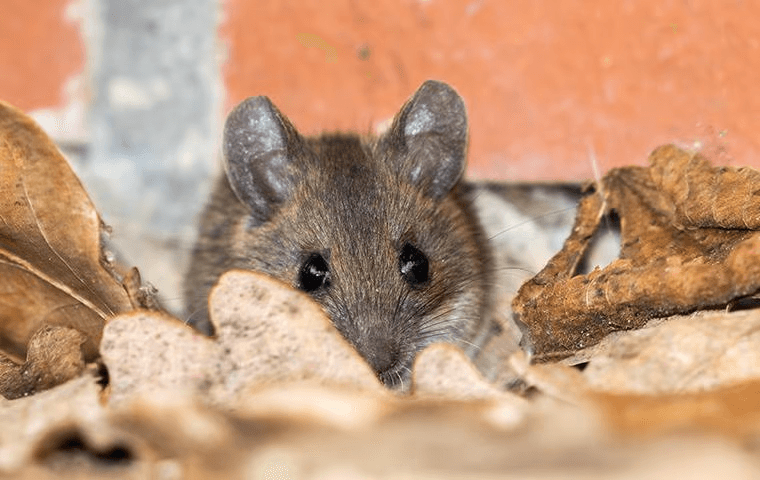
Some of the most common species of rodents that live in our area are the house mouse, Norway rat, and roof rat. Properties with ample access to food sources are attractive to rodents. Trashcans, compost bins, pet food bowls, and outdoor eating areas are places rodents search for food. Once comfortable foraging for food on your property, rodents will find their way inside while looking for additional food sources, or to escape harsh weather conditions. Inside, rodents cause a lot of damage by chewing on wires, pipes, drywall, flooring, clothing, wallpaper and furniture. Their chewing habits can potentially trigger electrical fires. They also contaminate food with bacteria through their excrement and saliva. Preventing problems with rodents is vital not only to protect your property but your family’s health and safety as well.
Deter rodents from your property by getting rid of their access to food. Keep tight-fitting lids on outdoor trash cans and compost bins. Remove bird feeders from your yard and pick up uneaten pet food between feedings. Make sure that outdoor eating areas are clear of food debris. Get rid of outdoor nesting spots by removing fallen trees, trees stumps, and piles of wood from your yard. Cut back tree branches and overgrown shrubs from the exterior of your property to stop rodents from gaining easy access to your exterior walls. Seal up cracks in the foundation, walls, and roofline to keep rodents out. Invest in a professional rodent control program.
Spiders
Spiders are predators and an essential part of the eco-system, feeding on and controlling a number of nuisance insects. Belonging to the class Arachnida, all spiders have a few things in common. They have two body regions (head and abdomen), fangs, eight legs, and no antennae or wings. Located at the front of their heads are appendages called pedipalps that they use to manipulate food. Spiders also have spinnerets at the end of their abdomens that they use to produce silk, although not all spiders build webs. Depending on their species, spiders vary in size, color pattern, and number of eyes
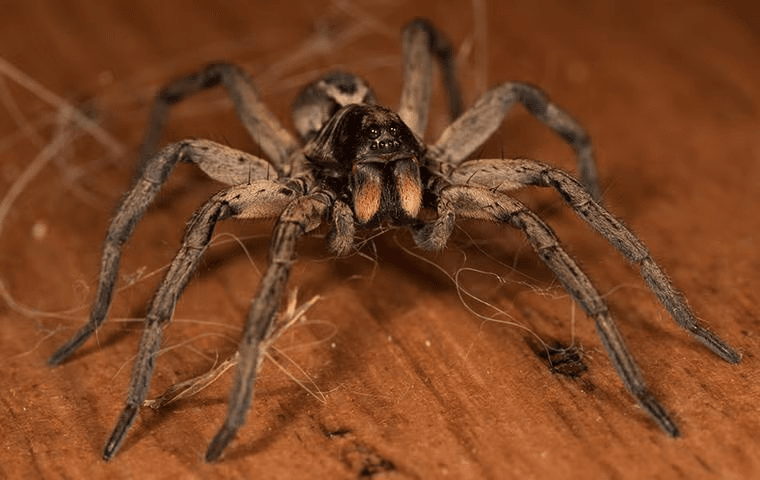
Most species of spiders, such as house spiders and wolf spiders, are harmless nuisance pests as their venom is not strong enough to cause significant health issues in people. A species of spider living in our area that is a danger is the black widow spider, which has venom strong enough to trigger health problems in people. Spiders prefer to live outside but will come indoors when tracking prey or when the weather becomes too unbearable. Spiders get in through cracks and other openings in the exterior, or open garages and basement doors.
To prevent problems with spiders, limit their access to your property by trimming back overgrown shrubs and bushes from the exterior. Inspect your exterior and repair any opening around windows and doors or in the foundation or exterior walls. Make your yard less attractive to spiders and the insects they feed on by removing piles of rocks, wood, and other debris. Keep the grass cut short and remove overgrown vegetation from your yard. Place garden areas a distance away from the exterior of your property.
Termites
ermites are wood-destroying insects that cost billions of dollars in damage across the United States each year. Two of the most common species in our area are subterranean termites and drywood termites. Drywood termites feed on dry wood that isn’t damaged by water or decay. On the other hand, the subterranean species feed on water-damaged or rotted wood. Another difference between the two species is where they nest: drywood termites make their nests inside the wood they feed on, while subterranean nest underground and travel back and forth from their nest to their food source each day
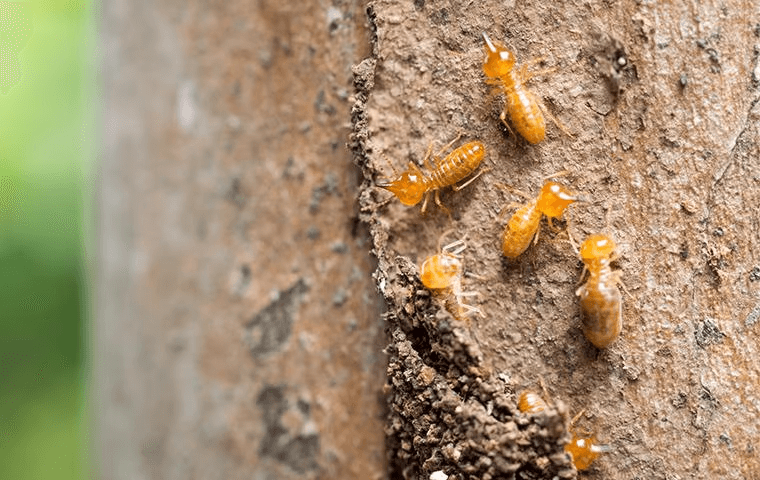
Termites are dangerous pests due to the structural damage they cause. These silent invaders can work for months or even years, eating away at structures without making their presence known, and homeowners insurance does not cover the damage because it is thought to be preventable. The structures drywood termites feed on include doors, flooring, furniture, picture frames, support beams, antiques, and attic framing. Subterranean termites feed on structural wood found behind walls, below floors, and above ceilings. Termites are a year-round threat and can find their way into any home or business.
Putting preventative measures in place is an important step to stop expensive termite damage from occurring. Keep gutters clean and place weatherstripping around windows and doors to prevent water from seeping into your walls. Use dehumidifiers to reduce moisture levels and ventilate crawlspaces. Remove fallen trees, tree stumps, and other organic debris from your property that attract termites. Leave a barrier of at least 12-18 inches between any soil or mulch and your foundation. Inspect furniture and other wooden items for signs of termite damage before bringing it onto your property. Invest in termite control measures for your property.
For exceptional home pest control and commercial exterminator services, including coverage for your home or business in Santa Clarita, contact CVA Exterminators today!

Why Choose CVA Exterminators, Inc.?
-
We're Available Whenever You Need Us
We offer both emergency and same-day services.
-
We Offer Plans to Keep Your Property Safe Long-Term
Our treatments are available on both a one-time or ongoing basis.
-
100% Satisfaction GuaranteeWe are proud of the services we provide for our customers.

.png)
